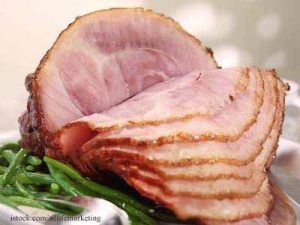Meatingplace is reporting that Smithfield Foods and Kroger are withdrawing 500,000 pounds of whole and half semi-boneless Cumberland Gap hams because they did not meet appearance standards. This is not a food safety issue.
 The hams do not have the pink color most consumers expect from a cooked and salted ham. The withdrawal is in these divisions: Cincinnati, Columbus, Michigan, Central, Louisville, Delta, Nashville, Mid-Atlantic, Jay C, and Dillons. The corporation does not know when the ham products will appear again in stores. Kroger has initiated its customer recall notification system.
The hams do not have the pink color most consumers expect from a cooked and salted ham. The withdrawal is in these divisions: Cincinnati, Columbus, Michigan, Central, Louisville, Delta, Nashville, Mid-Atlantic, Jay C, and Dillons. The corporation does not know when the ham products will appear again in stores. Kroger has initiated its customer recall notification system.
Meatingplace has written about this issue before. Consumer complaints about the color of hams have been sent to Oscar Mayer since 2011. The color may vary dramatically within one ham, or the meat may be almost white in color. Some hams actually look more like a turkey breast than pork.
Scientists studied whether the chilling methods used when processing the hams may affect the color. For a while, they thought that stunning the pigs before slaughter with different methods could be another factor. And “aggressive scalding” might affect the surface color. These factors were all proven to not be a factor in the color of the product.
There may be something else in the environment – nutrition, or genetics, that has changed in the past few years, but scientists have not been able to pinpoint it. They did notice, however, large differences in hemoglobin (iron) content of the pig’s different muscles which may relate to the color of the ham.
Ham consumption has declined over the last ten years, but researchers don’t know if the changing color of ham cuts is part of the issue. These hams are still safe to eat, but consumers may be offput by the appearance.




